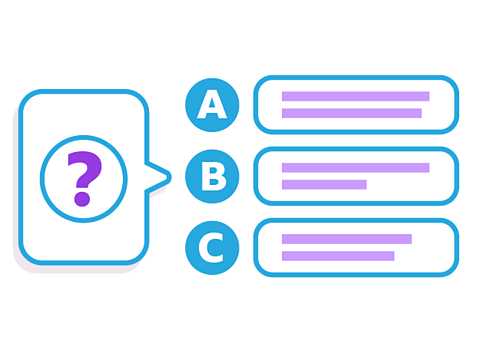Key points about ongoing actions in the present tense in Spanish

Use the present continuous tense to say that you are doing something now which is ongoing, eg I am watching, he is reading.
In English, the present participle ends in āingā, eg saying, listening, playing.
Use the verb estar (to be) and the present participle to form the present continuous tense in Spanish.
In Spanish, you form the present participle by changing the verbās ending. It is different for regular and irregular verbs.
Use llegar and seguir to describe ongoing actions in the present tense.
What is the present continuous tense?
Use the present continuous tense to say what you are doing at the moment.
In English, the present continuous is formed using the correct part of the verb to be and the form of the verb ending in -ing - the gerundIn English, the gerund is a verb form ending in -ing eg. running, walking. In Spanish, the gerund never changes its ending to agree, and usually ends in -ando or -iendo..
For example:
I am reading my books.
My friends are waiting for the bus.
How to form the present continuous in Spanish
To form the present continuous, use the correct form of the verb estar in the present tenseA verb that describes an action that is happening now or that happens regularly, eg I eat breakfast. followed by the present participle Form of the verb that expresses continuous or ongoing actions. Ends in 'ing' in English, eg watching, dancing, visiting. ending in ando, iendo, iendo . The present particple is sometimes called the gerund.
The verb 'estar' in the present tense
The table shows the conjugation of the verb estar:
| Sorry, something went wrongCheck your connection, refresh the page and try again. | I am |
| Sorry, something went wrongCheck your connection, refresh the page and try again. | you (singular informal) are |
| Sorry, something went wrongCheck your connection, refresh the page and try again. | he/she is |
| Sorry, something went wrongCheck your connection, refresh the page and try again. | we are |
| Sorry, something went wrongCheck your connection, refresh the page and try again. | you (plural informal) are |
| Sorry, something went wrongCheck your connection, refresh the page and try again. | they are |
The present participle in Spanish
The present participle is the form of the verb that ends in ā-ingā in English. To form the present participle in Spanish, remove the ar, er or ir from the infinitiveForm of the verb that has not been conjugated. Usually translated with 'to' in English, eg to play. of the verb and add the ending ando or iendo.
| Infinitive | Stem | Present participle |
|---|---|---|
| escuchar | escuch | escuchando |
| ver | v | viendo |
| escribir | escrib | escribiendo |
For example:
Estoy escuchando mĆŗsica. - I am listening to music.
Mi hermano ±š²õ³ŁĆ” viendo la tele. - My brother is watching TV.
Estamos escribiendo una carta. - We are writing a letter.
The present participle in Spanish - Mini quiz

Translate the following into Spanish:
He is listening to music.
____ _____ mĆŗsica.
EstĆ” escuchando mĆŗsica.
Irregular present participles in Spanish
A small number of verbs (including some stem-changing verbs) have irregularSomething that does not follow the usual or āregularā pattern. present participles.
For example:
Sorry, something went wrongCheck your connection, refresh the page and try again. (to read) ā Sorry, something went wrongCheck your connection, refresh the page and try again. (reading)
Sorry, something went wrongCheck your connection, refresh the page and try again. (to hear) ā Sorry, something went wrongCheck your connection, refresh the page and try again. (hearing)
Sorry, something went wrongCheck your connection, refresh the page and try again. (to sleep) ā Sorry, something went wrongCheck your connection, refresh the page and try again. (sleeping)
Sorry, something went wrongCheck your connection, refresh the page and try again. (to ask for) ā Sorry, something went wrongCheck your connection, refresh the page and try again. (asking for)
Irregular present participles in Spanish - Mini quiz

Translate the following into Spanish:
I am reading a book.
____ _____ un libro.
Estoy leyendo un libro.
Quiz - Ongoing actions in the present tense in Spanish
Practise what you've learned about ongoing actions in the present tense in Spanish with this quiz.
Higher Tier - Using 'llevar' to describe an ongoing action
Use the verb llevar followed by a time period and a present participle to describe an ongoing action.
For example:
Llevo dos semanas estudiando para mi examen. - I have been studying for my exam for two weeks.
Using 'llevar' - Mini quiz

Translate this sentence into Spanish:
I have been studying Spanish for three months.
Llevo tres meses estudiando espaƱol.
Higher Tier - Using 'seguir' to describe ongoing actions
Use the verb seguir followed by the present participle to describe ongoing actions in the present tense:
For example:
Sigue aprendiendo espaƱol. - Sheās still learning Spanish.
Now you have learned about ongoing actions in the present tense in Spanish why not explore regular verbs in the preterite tense in Spanish?
More on Present tense verbs
Find out more by working through a topic
- count10 of 10

- count1 of 10

- count2 of 10
